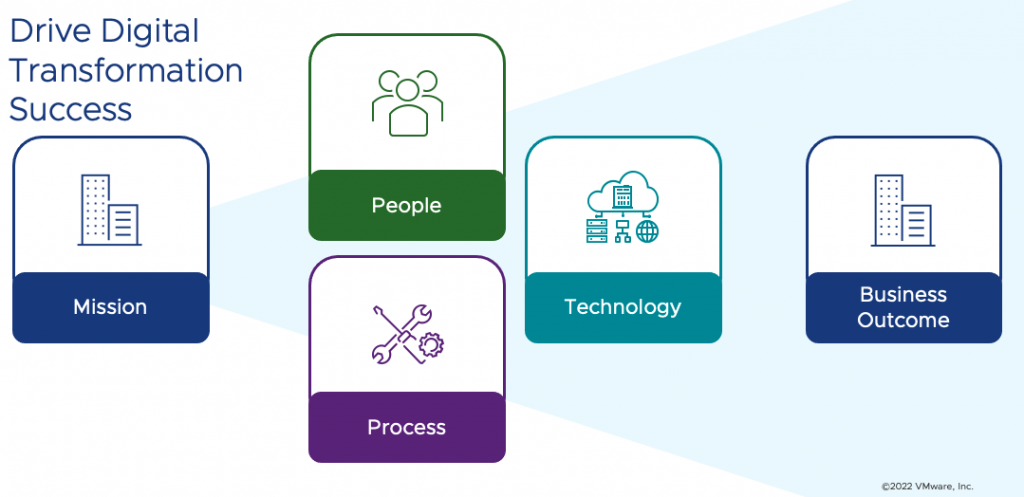This blog is part of a series about the operations pain points that many organizations face as they tackle digital transformation and change management. Our experts provide insights and recommendations based on their decades of hands-on experience and tackle some of the most pressing business and technology pain points.
Why are so many digital transformations shackled with extended timelines, frustrated executives, growing costs, and overworked IT staff? The answer is usually a lack of sufficient planning, resulting in limited foresight when defining the initial transformation budget and timeline. According to Gartner, digital transformations generally take twice as long and cost twice as much as expected.
To truly optimize all people, processes, and technologies during a digital transformation, planning for realistic costs and timelines is key to reaching an organization’s desired future state. Read on to discover a few of the common issues that arise during digital transformations and what you can do to plan for and mitigate their effects.
What are the major areas of consideration in planning a digital transformation?

A digital transformation strategy and roadmap that incorporates the true costs and time required is essential in achieving desired changes. A starter list of considerations includes:
- Mission – a clear vision: The management team communicates the business objectives, why change is needed, and what the future state looks like
- People – roles redefined: All employees should be engaged throughout this process to ensure business continuity, minimize turnover, and maintain internal knowledge and relationships
- Process – operating procedures redefined: Modifications needed to maximize employee strengths and the IT environment to best meet business objectives
- Technology – digital tools and assets: Take account of what’s in place now, the technology gaps that need to be filled, and tools that are redundant or should be eliminated
How should leaders communicate the mission when undertaking a digital transformation?
The success rate of digital transformations is higher in organizations with fewer people. As the number of employees increases, the success rate falls. There’s no better fact than this one to show just how important the role of communication is across the entire spectrum of employees.
Communications about digital transformations shouldn’t be an afterthought shared only through formal company emails and newsletters. All-hands and other two-way formats of communication throughout the duration of a digital transformation can go a long way to ensuring that everyone in the organization understands not only the desired future state, but also why change is needed and how the changes meet business objectives.
Every management level should be clear on the mission and regularly communicating with their respective groups to not only share progress, but to field questions and bring concerns to decision-makers where appropriate.
For a digital transformation to be successful, the mission needs to be clear to every group and employee within the organization throughout the duration of work toward completion.
What are the people considerations during a transformation?
Almost every transformation includes ideas about how to become more efficient, and that includes efficiencies as defined by new roles and a reorganization of staff.
Information about changing roles is often highly guarded by upper management, fearing turnover if people know the changes in store. However, sharing the information constructively and allowing all staff to be part of the changes can lead to better business outcomes.
For example, if a reorganization is part of the transformation, sharing the new organization’s structure and known skills gaps with all affected staff at the onset of the transformation can help:
- Provide current staff with the opportunity to upskill as needed for new roles available
- Minimize turnover to retain business knowledge and relationships for a more successful transformation outcome
Working with human resources to ensure open communication about new roles, define skill-building programs, and develop timelines that allow full-time employees to learn new skills is optimal for transformation success. Learn more about this topic from a conversation with Norman Dee in the first installment of this blog series, “Operations Pain Points Solved: People.”
How are processes developed for a successful transformation?
Operational processes are best developed by first defining the desired outcome, then working backwards to figure out the steps, staff, and tools involved in arriving at that outcome.
It’s a mistake to only work with higher levels of management to define new processes because teams who execute the work are most likely to know the pitfalls of current processes and have solutions in mind of how to fix them. They are also most likely to have relationships with and know the needs of major stakeholders.
In one large global company, a transformation within one of their major internal services groups that spanned more than five years was finally deemed unsuccessful. Their reorganization recently reverted to resemble the group’s organization at the onset of their transformation, and most employees at the execution level know exactly why the new structure didn’t work.
Cumbersome and hard-to-master tools, siloed working teams, lack of leadership transparency, and staff that lacked business and industry-specific knowledge all hindered the transformation’s success with churn and lack of sufficient productivity. C-level management wasn’t aware of many of the issues since problems were not always communicated up past middle management. During the failed transformation, costs ballooned and a large percentage of staff within the group transferred into other areas or left the company.
Creating a structure for feedback and suggestions from groups for processes that they will be responsible for is a good starting point for developing processes that will best serve the mission of the business.
How can technology be optimized throughout the organization?
Technology is an integral part of digital transformations. Knowing the current state of the entire IT environment is essential for prioritizing “needs” from “wants” before making large investments in new tools and licenses.
A full assessment of the current state of technology is optimal so that organizations know:
- What’s working
- Gaps that exist
- Redundancies that exist
- Automations needed
- Updates and licensing needed
- Technologies to retire (hardware, software, platforms, licenses)
- Nice-to-have additional tools
Developing an assessment of the current technology environment should include input from all IT teams for each area listed above, including timelines in collaboration with process development timelines. A well-defined IT environment includes components that work together to create a cohesive and secure technology ecosystem.
Get started on your digital transformation
If you’re not sure where to start or how your organization’s people, processes, and technologies are currently working together, a strategy and roadmap or assessment can help you develop a clear view of your current state and define next steps to get to your desired future state. Visit the VMware Solution Strategy and Roadmap Services overview for details about available assessments.
For more support, read the first blog in this series, “Operations Pain Points Solved: People,” which helps answer common questions around human change management during digital transformations.




